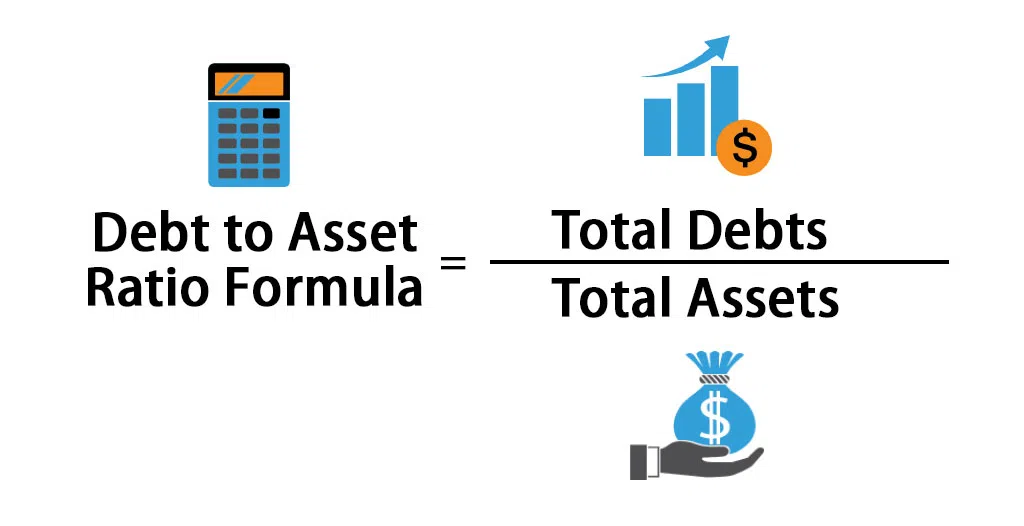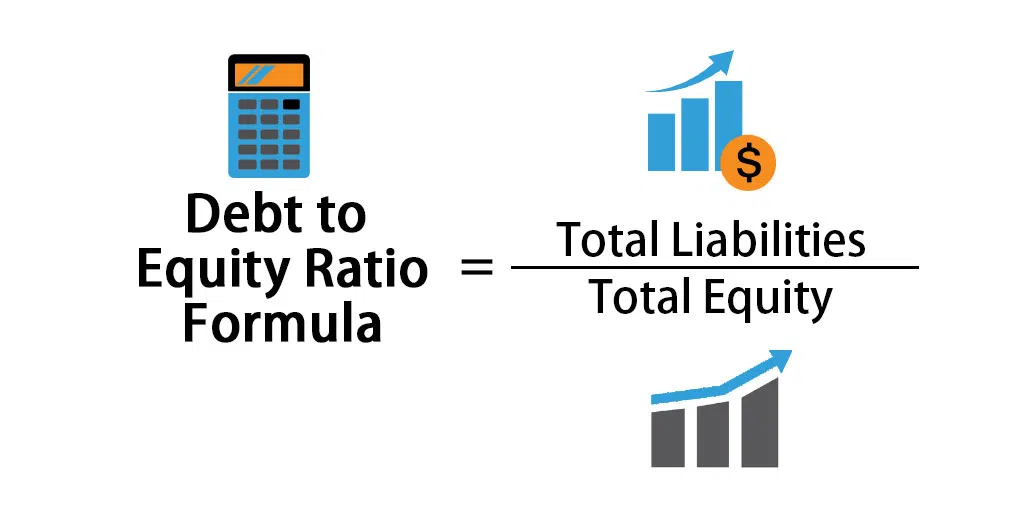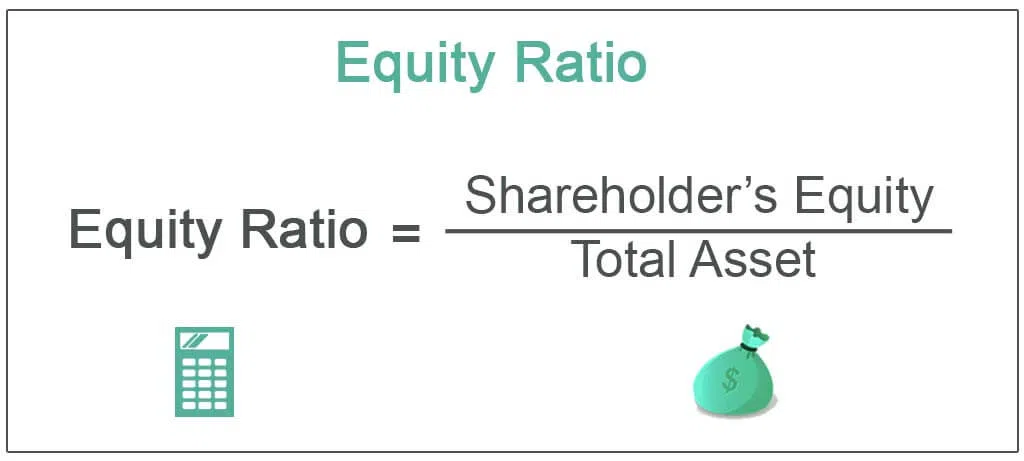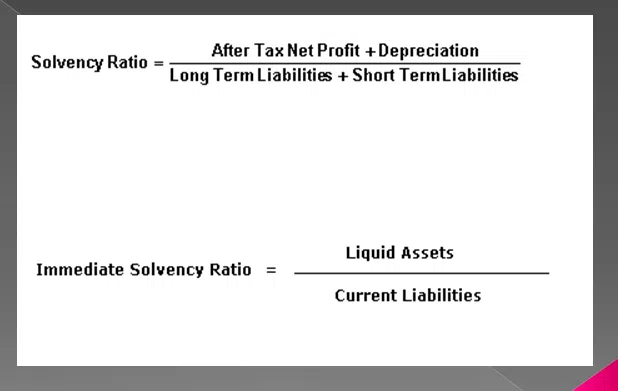A company’s solvency ratio measures its ability to meet its short and long-term obligations. A liquidity ratio looks at a company’s cash and other assets, which are more easily available to cover upcoming obligations. While a low solvency ratio may indicate a stable financial future, a high liquidity ratio suggests that a company will likely be forced to liquidate assets to meet its obligations.
A solvency ratio tells investors how financially stable a company is. A high ratio means a company will be able to meet long-term obligations, while a low one could lead to bankruptcy and a decreased credit rating. In addition to Solvency ratios, companies can also consider Cash Flow Ratios, Total Assets to Debt and Debt to Equity Ratios.
Did You Know?
In analysing solvency, it’s usually wise to look at liquidity measures in particular since a firm could be insolvent yet produce solid quantities of liquidity.

What is Solvency Ratio?
Let’s start with knowing the meaning of the solvency ratio. Solvency ratios are a critical part of a financial company’s performance. Knowing your solvency ratios will help you decide on debt levels and whether to pursue more. If a company has a high solvency ratio, it will be easier to obtain loans or other forms of debt financing. But, as with any metric, solvency ratios should be considered in context and not in isolation.
Basically, solvency is the ability of a company to meet its long-term debt requirements. It shows how much cash is available to cover long-term liabilities. It’s an important part of assessing a company’s financial health, as a high solvency ratio may indicate a higher risk of bankruptcy. Ultimately, a high solvency ratio indicates that a company relies on debt to operate, affecting its cash flow.
Understanding the Different Types of Solvency Ratios
If you’re looking to understand your company’s solvency, it’s important to understand the different types of ratios. Here are three types of ratios that you should be aware of. These ratios measure your debt to assets ratio, interest coverage ratio, and debt to equity ratio. If any of these numbers are too high, your company may be headed for insolvency. To understand the importance of these ratios, read on.
Interest Coverage Ratio
Interest coverage ratio refers to the number of times interest earned by a company is divided by the interest expense. This ratio shows a company’s ability to meet its debt payments. EBIT can be divided by the total interest expense to calculate this ratio. When a company’s interest expense is more than its income, it can reduce the amount of its EBIT by using the times’ interest earned method.
A company with a large interest coverage ratio has a larger financial cushion against short-term downturns than a company with small current earnings. On the other hand, a company with a lower interest coverage ratio may be less attractive to investors and may not be ready for growth. The interest coverage ratio refers to the number of times a company can meet its debt obligations from its current earnings.
Also Read: Definition of Liquidity Ratio and Formula With Examples
Debt to Assets Ratio
The Debt to Assets Ratio is a critical measure for determining a company’s financial health. Generally, a ratio below one indicates a stable business with lower debt levels.
However, a high ratio means that the company’s debt exceeds its assets, putting it at risk for failure. Hence, businesses must understand the importance of this metric and implement the most appropriate strategies for maintaining a low ratio.
When analysing a company’s financial health, one important consideration is its debt to asset ratio. If this ratio is higher than 50%, the company must justify its risky position by explaining how it plans to pay off its debts from the sale of its assets. Furthermore, a higher debt to asset ratio may indicate a need for restructuring a company, which could lead to liquidation.
Debt to Equity Ratio
When starting a new business, it’s vital to know how much of a company’s assets are in the form of debt and equity. The debt to equity ratio will help you see how much the company owes compared to its equity amount. Potential investors use this number to gauge the risk of a company and assess whether it is financially stable.
While higher debt levels can increase returns for investors, they can also exacerbate losses and pose a risk to shareholders. The ratio of debt to equity will indicate the profitability of a company. While most managers are not likely to interact with this number, a high ratio will cause concern for banks.
It may also discourage senior management from pursuing debt-related financing. When choosing a financing source, the debt-to-equity ratio is an important metric, and it can give you a better idea of whether your company is a good fit to get a loan.
Equity Ratio
It is a financial measure that determines the leverage used by a business. It uses investments in assets and an amount of equity to evaluate how well a company handles its debts and meets its requirements for assets.
A lower equity ratio indicates that the business primarily relied on loans to purchase assets and is seen as a sign of higher risk to the financials.
Solvency Ratios vs Liquidity Ratios
The first step in understanding the difference between Solvency Ratios and liquidity ratios is to understand both definitions. A low ratio will raise a red flag for analysts, as it is unlikely that a company will survive a stressful economic environment.
However, in an upbeat economic environment, a low solvency ratio can spur the company to make changes to increase its assets and reduce debt. Additionally, traders can speculate on where the stock will be going in terms of price.
- The first type of ratio measures the ability of a company to pay off its current obligations. A company with a high liquidity ratio will be able to pay off short-term debt obligations. On the other hand, a low liquidity ratio may indicate a company with some short-term problems.
- One common mistake made by investors is interpreting solvency ratios as liquidity ratios. Solvency ratios measure a company’s long-term health and ability to meet current obligations. On the other hand, liquidity ratios assess a company’s ability to turn its assets into cash quickly. While a company with high liquidity has plenty of cash on hand, it doesn’t tell an analyst how much debt the company has or what kind of liquidity it has.
- Liquidity ratios should be considered only a first step, while solvency ratios are essential to understanding a company’s financial health.
Liquidity Vs. Solvency
While it is important to monitor your business’s current liquidity and solvency ratios, there are also some factors to consider when evaluating a company’s future solvency. Generally, you can use the income statement and balance sheet to determine your current liquidity.
- Liquidity refers to a firm’s ability to meet its short-term obligations. On the other hand, Solvency refers to a firm’s ability to meet its long-term obligations.
- In the short term solvency ratio and formula, a company’s liquidity is essential, but a company’s solvency can make or break a firm’s success.
- Liquidity is your current ability to meet your liabilities, while solvency is your company’s long-term ability to meet its debts.
- A firm’s solvency is directly related to its capital structure, its degree of financial leverage and the risk associated with its capital structure. Liquid assets are a firm’s available assets to meet current debt service and operations.
To evaluate a company’s liquidity and solvency, investors must understand the difference between these two concepts. A highly liquid company may have enough cash to pay its bills at the moment, but it could suffer in the long term. Solvency is an essential part of a business’s financial health.
Limitations of Solvency Ratios
While the solvency ratio can be an important indicator, there’s one area in which it isn’t quite enough. It doesn’t consider the possibility of a company acquiring new funding sources over the long run, for example, bond or stock funds. This is why it is recommended to use it in conjunction with other types of analysis to provide a thorough overview of a company’s solvency.
Another limitation of Solvency Ratios is their inability to tell us how much capital a firm has, which is not true for all companies. There are other ways to assess the solvency of a firm, and one way to measure this is by examining the company’s liquidity.
By measuring the firm’s liquidity, we can determine how likely it will survive in a tough economic climate. Another way to choose a firm’s solvency is to look at its probability of achieving different rates of return. Often, these measures are examined under the broader category of risk.
How is a Solvency Ratio Calculated?
When a business goes into debt, it needs to know how much of that money will be available to pay its creditors. A solvency ratio can be calculated by taking the debt to equity ratio and dividing that number by two. This ratio will show the solvency of a company in five years.
This ratio is important because it will help companies evaluate their capital structures, decide whether to redistribute some equity and determine the appropriate amount of debt to take on.
Calculating solvency is essential for a company to make firm financial decisions and reassure both shareholders and creditors. If you own a business and are looking for some time-saving tricks, Legaltree is one good choice for keeping all reports of payment transactions handy.
Conclusion
That was all about the Solvency ratio’s meaning, importance, types, and how to calculate it. The balance sheet and income statement are two of the most important financial statements a business can use to determine its solvency.
Now keep track of your cash flow and manage your incomes and expenses with ease by using the Cashbook app by Legaltree.









